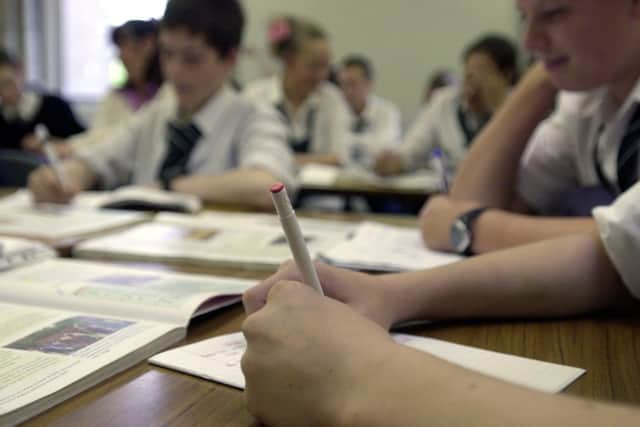Schools in the region are under unsustainable pressure, they need targetted support - Fiona Spellman
One of the striking features of the Tory leadership debate was how little education featured. Beyond a vague emphasis on education being important to both candidates, there was very little genuine acknowledgement of the challenges facing schools or how a future PM might hope to tackle them.
In Liz Truss’s first speeches, she mentioned the economy, taxes, energy prices and the NHS, but education was conspicuous by its absence. In the briefings and news stories that have followed, there has again been no mention of what is planned for education.
Advertisement
Hide AdAdvertisement
Hide AdOf course, the new Prime Minister is facing many sizable challenges and it is understandable that the energy crisis is at the top of the agenda right now.


But education requires urgent support too. Covid brought into sharp focus the differences in children’s experiences beyond school. Some went home to a laptop, a stable internet connection, a dedicated space to learn, and adults who were able to engage with them regularly about their learning. Some attended schools where online teaching was already in place. Others found themselves locked out of any meaningful learning for months on end, despite the best efforts of their teachers. All children suffered as a result of the restrictions placed on schools, but they didn’t all suffer equally.
To the rest of us, it may feel like the worst of Covid has passed, but schools are still grappling with the fallout, and they will be for some time to come. The inequalities which Covid exposed still exist, and the current cost-of-living crisis is likely to result in them widening further still.
Schools in areas of deprivation already work tirelessly to remove a whole range of barriers to learning before children even reach the classroom. Washing uniforms, providing sanitary products, and helping families access welfare, are all examples of ways that schools already go above and beyond to meet children’s needs beyond teaching.
Advertisement
Hide AdAdvertisement
Hide AdHowever, this can only stretch so far. Schools are facing significant inflationary pressures, with the combination of high energy costs and the recent pay increase for teachers all coming from the same fixed budgets. School leaders are having to make unenviable choices about what to cut, just as disadvantaged children and families need greater support.
Teachers desperately want to help the children who suffered most in the pandemic to recover, academically, socially and emotionally. Here in the North of England, children experienced some of the highest rates of school absence. In the Autumn 2021/22 term, the North East had the joint-highest overall absence rate in England, alongside the South West. London had the lowest rate. During lockdown, only 14 per cent of children in the North received four or more pieces of offline schoolwork per day, compared with 20 per cent country-wide.
The issue is compounded by the greater levels of persistent disadvantage found in the North. In several parts of the region, over half of disadvantaged students live in long-term poverty, including Kirklees, 58 per cent, Sunderland, 54 per cent, Halton, 53 per cent, Middlesbrough, 53 per cent, Knowsley, 52 per cent, Kingston-Upon-Hull, 52 per cent, and Hartlepool, 51 per cent.
In places where many students spend most of their lives confined to poverty, average grades are significantly lower than in richer areas.
Advertisement
Hide AdAdvertisement
Hide AdAnd figures released earlier this month show that the attainment gap between poorer pupils and their wealthier peers is at its widest point in ten years.
These statistics, published by the Department for Education, prove that while the learning of all children was disrupted by Covid, disadvantaged pupils suffered the most.
The proportion of non-disadvantaged pupils meeting the “expected standard” in reading, writing and maths fell from 71 per cent in 2019 to 65 per cent this year, whereas the drop for disadvantaged pupils was from 51 to 43 per cent.
The link between poverty and low attainment is clear. And the cost-of-living crisis is only going to make matters worse for those families already on the breadline.
Advertisement
Hide AdAdvertisement
Hide AdThere is no one-size-fits-all solution to this problem. The answer lies in the heart of those communities hardest hit both by Covid and the economic downturn.
We need to move beyond blanket measures directed by Whitehall and instead give the power and resources to the teachers who know their communities best and can respond at a local level. We need an all-age Pupil Premium, which is equalised right from early years to age 19, targeted at those who experience persistent disadvantage, whom we know are most at risk of educational failure.
The cost-of-living crisis will not affect all families equally. It’s time for targeted measures to reflect this.
Fiona Spellman is CEO of Leeds-based education charity SHINE.